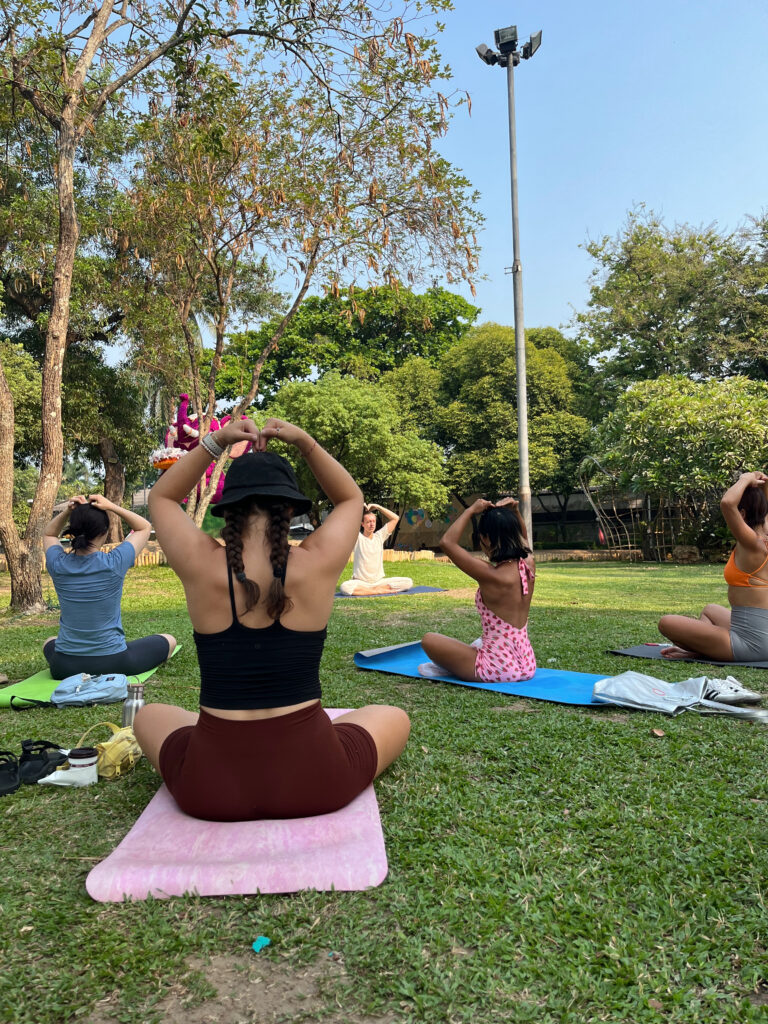In our fast-paced world, taking time for sensory self-care can feel like a luxury. Yet, it’s essential for our well-being. By engaging our senses, we can reduce stress and enhance our emotional health. I’ve found that understanding the science behind this practice not only makes it more effective but also more enjoyable.
Research shows that sensory experiences—like soothing sounds, calming scents, and comforting textures—can significantly impact our mood and mental state. By tapping into these elements, we can create personalized rituals that nurture our minds and bodies. Join me as I explore the fascinating science behind sensory self-care and how it can transform your daily routine into a sanctuary of peace and joy.
Understanding Sensory Self Care
Sensory self-care focuses on utilizing our senses to improve mental well-being. It encompasses various practices that engage smell, sight, sound, taste, and touch to foster relaxation and reduce stress.
What Is Sensory Self Care?
Sensory self-care involves intentional activities that stimulate the senses to promote emotional health. Activities can include using calming scents, listening to soothing music, or indulging in textures that bring comfort. Engaging the senses helps ground me in the present moment and enhances my self-awareness. By integrating sensory self-care into daily routines, I deepen my connection to my environment and enhance my overall experience of life.
The Importance of Sensory Experiences
Sensory experiences play a crucial role in regulating emotions and improving mental clarity. Engaging the senses activates the brain’s limbic system, which is responsible for emotions and memory. Research shows that pleasant sensory experiences can decrease cortisol levels, a stress hormone. Activities such as aromatherapy with essential oils or mindful eating of flavorful foods create positive shifts in mood and alleviate anxiety. Prioritizing sensory self-care strengthens my resilience against daily stressors while fostering a sense of joy and peace.
Soooo what are the benefits?
Sensory self-care leverages our natural responses to sensory stimuli, significantly influencing our psychological and physiological health. Engaging my senses intentionally can create profound shifts in my mental and emotional state.
Psychological Benefits
Engaging in sensory self-care offers various psychological advantages. Research shows that sensory experiences can foster emotional regulation, reducing feelings of anxiety and depression. Activities like listening to soothing music or inhaling calming scents activate the brain’s limbic system, enhancing mood and promoting relaxation. Studies indicate that individuals who incorporate sensory self-care report higher levels of happiness, increased mindfulness, and a sense of connection to their surroundings. Regular sensory activities contribute to a stronger sense of self and improved emotional resilience, making it easier to manage stress.
Physiological Effects
Sensory self-care also has notable physiological effects on the body. Engaging with the senses can lower cortisol levels, which decreases stress and anxiety. For example, exposure to certain scents, like lavender or citrus, can reduce blood pressure and promote relaxation. Research highlights that tactile experiences, such as massage or immersing my hands in warm water, can lower heart rate and enhance feelings of well-being. Additionally, sensory activities trigger the release of endorphins, leading to reduced pain perception and an overall improved physical state. By integrating sensory self-care into my routine, I can enhance both my mental and physical health, creating a holistic approach to well-being.
Techniques for Effective Sensory Self Care
Engaging in sensory self-care requires intentional activities that stimulate my senses. Here are several techniques that leverage visual, auditory, and tactile experiences to enhance my overall well-being.
Visual Stimulation
Visual stimulation employs colors, shapes, and imagery to engage my sense of sight. I can create a calming environment by utilizing soft hues like blue and green, known for their relaxing effects. Incorporating natural elements, such as plants or photographs of serene landscapes, fosters tranquility. Practicing mindfulness through visual art, whether painting or coloring, promotes creativity and relaxation. I can also explore guided image meditation that involves visualizing peaceful scenes, reducing stress and anxiety.
Auditory Techniques
Auditory techniques involve sounds that soothe or energize me. Listening to nature sounds, such as rain or ocean waves, enhances relaxation and decreases stress. I can curate playlists featuring soft music or binaural beats that promote focus or calmness. Participating in sound therapy, using instruments like singing bowls or tuning forks, further stimulates my auditory senses. Practicing mindfulness through sound can also involve focusing on my breathing or the noises around me, helping me center my thoughts.
Tactile Practices
Tactile practices stimulate my sense of touch, contributing to relaxation and comfort. Engaging in activities like knitting, gardening, or pottery can provide sensory enjoyment. I’ve been enjoying Spring a lot this year and gardening every weekend. I just bought a Foxglove from Home Depot that I am really excited about.
Using essential oils during massages or baths helps soothe muscles while engaging my skin and sense of smell. I can further enhance my tactile experience with weighted blankets, promoting a sensation of safety and warmth. Embracing moments of sensory exploration, like walking on grass or sand, immerses me in the present and increases my awareness of the world around me.
Incorporating Sensory Self Care into Daily Life
Incorporating sensory self-care into daily routines enhances well-being and promotes a mindful lifestyle. I find that specific techniques and environments can significantly boost my sensory experiences.
Creating a Sensory-Friendly Environment
Creating a sensory-friendly environment involves optimizing the spaces I occupy. I focus on integrating calming colors, soft textures, and natural elements. For instance, I often select earthy tones for my living spaces, as studies show they foster relaxation. Adding plants or natural light enhances the air quality and contributes to a tranquil atmosphere. Sound plays a crucial role too—using gentle background music or nature sounds can reduce stress levels. I utilize items like scented candles or essential oils to engage my sense of smell, choosing calming scents such as lavender or eucalyptus to create serenity. Each element works together to form an inviting space that encourages peace and mindfulness.
Mindfulness and Sensory Awareness
Mindfulness and sensory awareness practice enables deeper engagement with my surroundings. I take moments throughout my day to focus on my senses—what I see, hear, smell, touch, and taste. For example, during meals, I savor each bite, noticing flavors, textures, and aromas. This practice not only enhances my appreciation for food but also cultivates gratitude. Engaging in mindful breathing exercises can heighten awareness of sensations within my body, grounding me in the present moment. Techniques like guided imagery or meditation help train my mind to recognize sensory experiences, contributing to emotional regulation and stress reduction. By prioritizing sensory awareness, I enhance my daily experiences and promote overall well-being.
Conclusion
Embracing sensory self-care has transformed my approach to well-being. By intentionally engaging my senses I’ve discovered a powerful tool for managing stress and enhancing my emotional health. Creating personalized rituals allows me to connect deeply with my environment and cultivate moments of joy in everyday life.
As I incorporate sensory practices into my routines I notice a significant shift in my mood and resilience. It’s incredible how something as simple as sound or scent can profoundly impact my overall experience. I encourage you to explore these techniques and find what resonates with you. Prioritizing sensory self-care can lead to a more mindful and fulfilling life.





